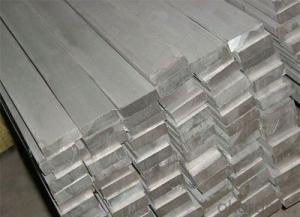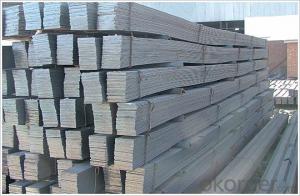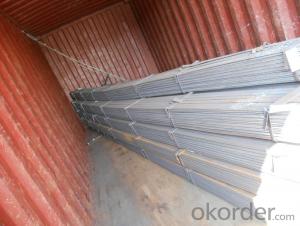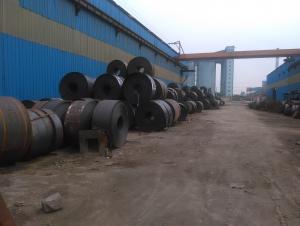Steel Flat Bar Chinese Standard Slit and Cut Form
- Loading Port:
- China main port
- Payment Terms:
- TT or LC
- Min Order Qty:
- 25 m.t.
- Supply Capability:
- 10000 m.t./month
OKorder Service Pledge
OKorder Financial Service
You Might Also Like
1. Structure of Steel Flat Bar Chinese Standard Slit and Cut Form Description:
Steel flat bar Chinese standard slit and cut form is a beam with an I-shaped cross-section. The horizontal elements of the "I" are known as flanges, while the vertical element is termed the "web". Steel flat bar Chinese standard slit and cut form is usually made of structural steel and is used in construction and civil engineering. The steel flat bar Chinese standard slit and cut form resists shear forces, while the flanges resist most of the bending moment experienced by the beam. Steel flat bar Chinese standard slit and cut form theory shows that the I-shaped section is a very efficient form for carrying both bending and shears loads in the plane of the web.
2. Main Features of Steel Flat Bar Chinese Standard Slit and Cut Form:
• Grade: Q235
• Type: Mild carbon steel
• Deflection: The stiffness of the I-beam will be chosen to minimize deformation
• Vibration: The stiffness and mass are chosen to prevent unacceptable vibrations, particularly in settings sensitive to vibrations, such as offices and libraries.
• Local yield: Caused by concentrated loads, such as at the beam's point of support.
3. Steel Flat Bar Chinese Standard Slit and Cut Form Images:
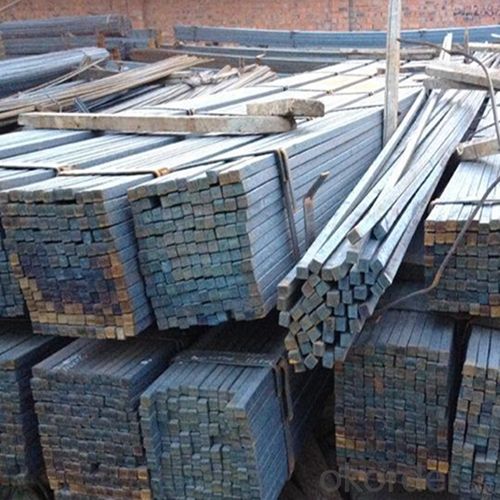
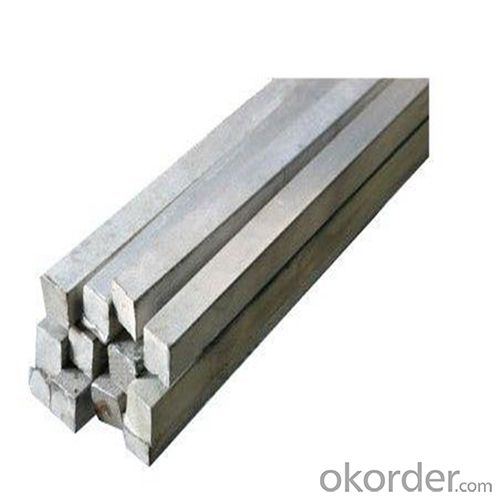
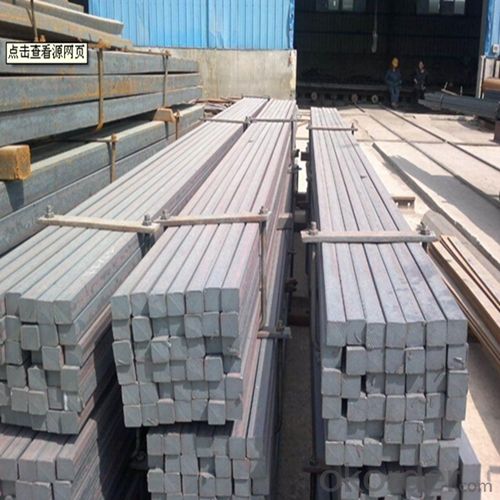
4. Steel Flat Bar Chinese Standard Slit and Cut Form Specification:
Alloy No | Grade | Element(%) | ||||
C
| Mn
| S
| P
| Si
| ||
Q235
|
B
|
0.12—0.20 |
0.3—0.7 |
≤0.045 |
≤0.045
|
≤0.3
|
Alloy No | Grade | Yielding strength point(Mpa) | Tensile strength (Mpa) | Elongation after fracture(%) | ||||||
Thickness (mm) | Thickness (mm) | |||||||||
≤16 | >16--40 | >40--60 | >60--100 | ≤16 | >16--40 | >40--60 | >60--100 | |||
≥ | ≥ | |||||||||
Q235 |
B |
235 |
225 |
215 |
205 |
375--500 |
26 |
25 |
24 |
23 |
5. FAQ
We have organized several common questions for our clients,may help you sincerely:
①Is this product same as W beam?
In the United States, the most commonly mentioned I-beam is the wide-flange (W) shape. These beams have flanges in which the planes are nearly parallel. Other I-beams include American Standard (designated S) shapes, in which flange surfaces are not parallel, and H-piles (designated HP), which are typically used as pile foundations. Wide-flange shapes are available in grade ASTM A992,[4] which has generally replaced the older ASTM grades A572 and A36.
②How to inspect the quality?
We have a professional inspection group which belongs to our company. We resolutely put an end to unqualified products flowing into the market. At the same time, we will provide necessary follow-up service assurance.
③Is there any advantage about this kind of product?
Steel I beam bar IPE has a reduced capacity in the transverse direction, and is also inefficient in carrying torsion, for which hollow structural sections are often preferred.
- Q:Can steel flat bars be used in the aerospace industry?
- Yes, steel flat bars can be used in the aerospace industry. Steel is a widely used material in various industries, including aerospace, due to its excellent strength, durability, and versatility. Steel flat bars can be used in the construction of aircraft frames, wings, landing gears, and other structural components. They provide a strong and reliable support system, ensuring the structural integrity and safety of the aircraft. Additionally, steel flat bars can be machined and fabricated to meet the specific requirements and performance standards of the aerospace industry.
- Q:What are the different techniques for joining steel flat bars together?
- There are several techniques for joining steel flat bars together, depending on the specific requirements and applications. Some of the common techniques include welding, bolting, riveting, and adhesive bonding. 1. Welding: Welding is one of the most widely used techniques for joining steel flat bars. It involves melting the edges of the flat bars and fusing them together using heat. Different welding methods, such as arc welding, gas welding, and laser welding, can be used depending on the thickness and composition of the steel bars. 2. Bolting: Bolting is an effective technique for joining steel flat bars, especially when disassembly is required. It involves drilling holes in the flat bars and using bolts, nuts, and washers to secure them together. Bolting provides a strong and reliable connection but may require periodic maintenance to prevent loosening. 3. Riveting: Riveting involves driving a metal pin or rivet through holes drilled in the steel flat bars. The rivet is then deformed on the opposite side, creating a permanent connection. Riveting provides a strong joint and is commonly used in structural applications where high strength and rigidity are required. 4. Adhesive bonding: Adhesive bonding is a technique where a strong adhesive is applied between the surfaces of the steel flat bars to create a bond. This method is suitable for joining thin flat bars or when welding or drilling is not feasible. Adhesive bonding provides a clean and aesthetically pleasing joint but may have limitations in terms of strength and durability. 5. Mechanical fasteners: Mechanical fasteners, such as clips, clamps, or brackets, can be used to join steel flat bars together. These fasteners are designed to hold the flat bars in place without the need for welding or drilling. Mechanical fasteners offer ease of installation and disassembly but may not provide the same level of strength as welding or riveting. It is important to select the appropriate joining technique based on factors such as the intended application, load requirements, design constraints, and the properties of the steel flat bars.
- Q:Can steel flat bars be used for staircase construction?
- Yes, steel flat bars can be used for staircase construction. They are commonly used as stringers or supports for the steps, providing strength and durability to the staircase structure.
- Q:What are the common applications of steel flat bars?
- Steel flat bars are commonly used in a variety of applications including construction, manufacturing, and transportation industries. They are often used as structural support in buildings, fabrication of machinery and equipment, and as base plates or brackets in various manufacturing processes. Additionally, steel flat bars are frequently used in the automotive and aerospace industries for their strength and durability.
- Q:Can steel flat bars be used for manufacturing tools or machinery?
- Yes, steel flat bars can be used for manufacturing tools or machinery. They are commonly used in various industries due to their strength, durability, and versatility. Steel flat bars can be easily shaped, welded, and machined according to specific requirements, making them a suitable choice for fabricating different types of tools or machinery components.
- Q:What is the maximum length-to-thickness ratio for steel flat bars?
- The maximum length-to-thickness ratio for steel flat bars is typically around 200:1.
- Q:What are the different surface finishes available for steel flat bars?
- Some common surface finishes available for steel flat bars include hot rolled, cold rolled, galvanized, and polished finishes.
- Q:Are steel flat bars commonly used in the renewable energy sector?
- Yes, steel flat bars are commonly used in the renewable energy sector. They are widely used for various applications such as structural support, framing, and mounting systems for solar panels, wind turbines, and other renewable energy infrastructure. Steel flat bars offer excellent strength, durability, and versatility, making them a preferred choice in the construction of renewable energy projects. Additionally, steel is a sustainable material as it is highly recyclable, aligning with the environmentally friendly nature of the renewable energy sector. Overall, steel flat bars play a significant role in the development and expansion of renewable energy installations.
- Q:How are steel flat bars different from steel round bars?
- The shape and physical properties of steel flat bars and steel round bars are different. The most noticeable distinction is their shape: steel flat bars have a flat surface and rectangular cross-section, while steel round bars have a cylindrical shape. In terms of usage, steel flat bars find frequent application in construction, manufacturing, and industrial projects that require a robust and durable material. They are often employed as support or reinforcement structures due to their flat surface, which provides stability and strength. Moreover, steel flat bars are versatile and can be easily welded, cut, and shaped into various forms, making them suitable for a wide range of projects. On the other hand, steel round bars are primarily used in applications that demand strength, such as shafts, axles, and structural components. The cylindrical shape of round bars offers excellent strength and load-bearing capacity, making them ideal for applications involving torsional forces. Additionally, round bars are commonly utilized in the manufacturing of machinery, tools, and equipment due to their ability to withstand high stress and pressure. Another disparity between steel flat bars and steel round bars lies in their physical properties. Due to their differing shapes, flat bars have a larger surface area compared to round bars with the same weight. This characteristic can result in higher heat transfer rates and improved corrosion resistance for steel flat bars. On the other hand, round bars have a smaller surface area, which may make them more suitable for certain applications where reduced friction and drag are desired. In conclusion, steel flat bars and steel round bars differ in terms of their shape, applications, and physical properties. Flat bars are commonly used for support and reinforcement in construction and manufacturing, while round bars are often used for strength and load-bearing applications. Understanding these differences can aid in selecting the most appropriate type of steel bar for a given project or application.
- Q:How do you prevent burrs or sharp edges on steel flat bars during cutting?
- To prevent burrs or sharp edges on steel flat bars during cutting, there are several steps you can take: 1. Use the right cutting tool: Ensure that you are using a tool specifically designed for cutting steel, such as a high-quality hacksaw, angle grinder with a cutting wheel, or a metal-cutting bandsaw. Using the appropriate tool will help minimize the formation of burrs. 2. Choose the correct blade or cutting wheel: Select a blade or cutting wheel that is specifically designed for cutting steel. These blades typically have more teeth or a higher grit, which helps to reduce the formation of burrs. 3. Secure the flat bar properly: Make sure that the steel flat bar is securely clamped or held in place before cutting. This will help prevent any movement during the cutting process, which can lead to uneven cuts and the formation of burrs. 4. Apply cutting lubricant: Lubricating the cutting area with a suitable cutting fluid or lubricant can help reduce friction and heat during the cutting process. This can minimize the chances of burrs forming on the steel flat bar. 5. Control the cutting speed: Cut at a moderate and consistent speed, avoiding excessive force or pressure. Cutting too quickly or applying too much pressure can increase the likelihood of burrs forming. A steady and controlled cutting motion will help produce cleaner cuts with fewer burrs. 6. Support the bar during cutting: If possible, provide additional support to the steel flat bar during the cutting process. Using a workbench or vise to support the bar can help reduce vibrations and ensure a more precise cut, resulting in fewer burrs. 7. Use a deburring tool: Even with all the precautions taken, some burrs may still form. In such cases, using a deburring tool, such as a file or sandpaper, can help remove any sharp edges or burrs left after cutting. By following these steps, you can significantly reduce the occurrence of burrs and sharp edges on steel flat bars during cutting, resulting in cleaner and safer finished pieces.
1. Manufacturer Overview |
|
|---|---|
| Location | |
| Year Established | |
| Annual Output Value | |
| Main Markets | |
| Company Certifications | |
2. Manufacturer Certificates |
|
|---|---|
| a) Certification Name | |
| Range | |
| Reference | |
| Validity Period | |
3. Manufacturer Capability |
|
|---|---|
| a)Trade Capacity | |
| Nearest Port | |
| Export Percentage | |
| No.of Employees in Trade Department | |
| Language Spoken: | |
| b)Factory Information | |
| Factory Size: | |
| No. of Production Lines | |
| Contract Manufacturing | |
| Product Price Range | |
Send your message to us
Steel Flat Bar Chinese Standard Slit and Cut Form
- Loading Port:
- China main port
- Payment Terms:
- TT or LC
- Min Order Qty:
- 25 m.t.
- Supply Capability:
- 10000 m.t./month
OKorder Service Pledge
OKorder Financial Service
Similar products
New products
Hot products
Related keywords













